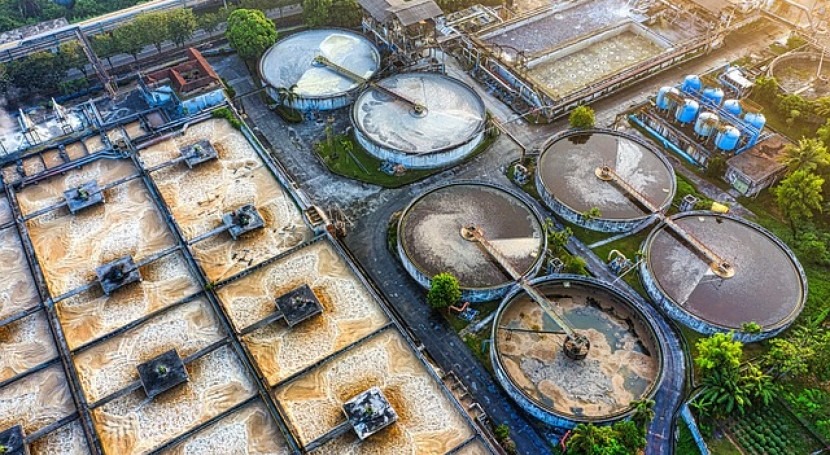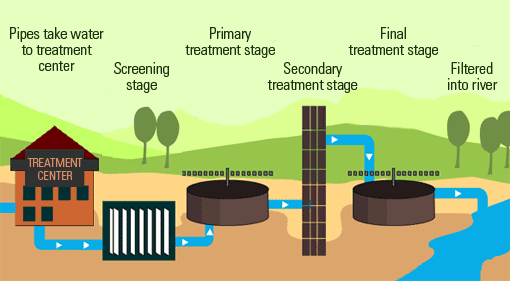Optimizing Drainage Treatment Processes: Approaches for Improved Water Top Quality and Resource Recuperation
In the realm of wastewater therapy, the mission for enhancing efficiency and sustainability through procedure optimization is an ongoing search that holds immense relevance. From sophisticated modern technologies to cutting-edge source recovery methods, the landscape of wastewater therapy is advancing quickly.
Significance of Process Optimization
Enhancing drainage therapy processes with meticulous procedure optimization is important for taking full advantage of performance and guaranteeing environmental sustainability. By fine-tuning each step of the treatment procedure, from first consumption to last discharge, water treatment facilities can achieve higher degrees of impurity removal, decrease power usage, and minimize the generation of waste spin-offs. Process optimization includes examining key performance indicators, such as hydraulic retention times, sludge retention times, and nutrient levels, to identify locations for renovation and carry out targeted remedies.
Reliable process optimization not just improves the total efficiency of waste water therapy plants however also contributes to cost savings and governing compliance. By enhancing processes, operators can achieve greater treatment capacities without the need for significant facilities investments. Additionally, boosted therapy efficiency causes cleaner effluent discharge, lowering the environmental influence on obtaining water bodies and communities.

Advanced Treatment Technologies
In the realm of waste water therapy, the implementation of advanced treatment technologies plays a critical role in enhancing the overall performance and performance of the treatment procedures. These cutting-edge innovations use innovative remedies to resolve complex impurities present in wastewater streams, making certain the elimination of contaminants to fulfill stringent water quality standards. Advanced treatment procedures such as membrane layer bioreactors, ozonation, advanced oxidation procedures, and turn around osmosis allow the extensive elimination of impurities, including arising toxins like drugs and individual treatment items.
Furthermore, these innovations facilitate source recovery by extracting beneficial products such as phosphorus, nitrogen, and power from the wastewater. As an example, progressed nutrient elimination technologies can recuperate phosphorus and nitrogen for reuse in farming fertilizers, while power recovery systems like anaerobic food digestion can harness biogas for electrical power generation. By integrating sophisticated therapy innovations into wastewater therapy plants, operators can boost water quality, minimize ecological influence, and move in the direction of a more resource-efficient and lasting strategy to wastewater management.
Resource Recuperation Methods
Resource recuperation methods in wastewater treatment processes play an important role in making best use of the utilization of beneficial resources consisted of within wastewater streams. One typical resource recovery method is the extraction of nutrients like phosphorus and nitrogen from wastewater for reuse as fertilizers or in industrial procedures.
Water recovery strategies, such as membrane layer technologies and advanced filtering systems, enable the therapy and reuse of water for non-potable applications like watering or industrial procedures. By applying resource healing strategies in wastewater therapy plants, not just can useful resources be preserved and reused, yet the overall sustainability and performance of the therapy process can be dramatically improved. As the concentrate on source deficiency and ecological sustainability proceeds to grow, the value of incorporating source recuperation strategies right into wastewater therapy procedures ends up being progressively noticeable.
Lasting Practices in Wastewater Therapy
Applying lasting techniques in wastewater therapy facilities is vital for enhancing ecological stewardship and long-term operational efficiency. Lasting practices in wastewater therapy incorporate a series of approaches targeted at lessening the environmental impact of treatment procedures while maximizing source recuperation. One essential element of lasting wastewater therapy is the application of energy-efficient innovations to minimize the carbon impact of therapy plants. This can consist of using renewable resource sources such as solar or wind power, as well as the optimization of existing processes to reduce power usage.
In addition, the adoption of sophisticated therapy technologies that promote water reuse and recycling plays a crucial role in sustainable wastewater monitoring. By dealing with wastewater to a high standard, it can be repurposed for various non-potable applications, such as irrigation, industrial procedures, and even potable water production in some situations. This look at here now not just preserves beneficial freshwater resources however additionally lowers the quantity of effluent discharged into the atmosphere.

Study on Successful Optimization
As wastewater treatment facilities increasingly concentrate on lasting methods, real-world study showcasing effective optimization strategies act as very useful designs for market development. One such case research study rotates around the execution of advanced nutrient removal innovations in a community wastewater treatment plant. By including biological nutrient removal processes and enhancing functional parameters, the facility achieved substantial reductions in nitrogen and phosphorus degrees released right into receiving waters, eventually improving overall water high quality.
An additional notable situation research study involves the combination of anaerobic food digestion systems in an industrial wastewater read this therapy plant to enhance energy recuperation and source performance (Waste Water Treatment). Through the food digestion of natural waste materials, the facility not just produced biogas for power manufacturing however also reduced the quantity of sludge requiring disposal. This double advantage not only enhanced the plant's sustainability efficiency yet also resulted in cost financial savings
These effective optimization methods show the possibility for wastewater therapy centers to accomplish both economic and environmental benefits through cutting-edge strategies and reliable processes. By finding out from these case researches, sector experts can additionally maximize their own procedures to enhance water top quality and source healing.
Conclusion
To conclude, enhancing drainage treatment procedures through innovative innovations, source recuperation methods, and lasting practices is critical for enhancing water quality and making best use of source recuperation. Waste Water Treatment. Situation researches have actually shown effective execution of optimization techniques in various wastewater therapy centers. By remaining to prioritize process official website optimization, we can make certain efficient and effective treatment of wastewater, ultimately leading to an extra lasting and eco-friendly method to managing water sources
By fine-tuning each step of the therapy procedure, from preliminary intake to last discharge, water therapy centers can attain higher levels of contaminant removal, decrease energy intake, and decrease the generation of waste spin-offs.In the realm of waste water treatment, the application of advanced treatment technologies plays a critical role in improving the overall efficiency and efficiency of the therapy processes. By including innovative treatment technologies into wastewater treatment plants, drivers can boost water top quality, decrease environmental influence, and move in the direction of a much more sustainable and resource-efficient approach to wastewater administration.
By applying resource recuperation techniques in wastewater treatment plants, not only can useful resources be conserved and recycled, however the general sustainability and efficiency of the therapy process can be significantly enhanced. Sustainable practices in wastewater treatment incorporate a variety of strategies intended at minimizing the environmental effect of therapy processes while maximizing source recovery.
Comments on “Key Difficulties in Urban Waste Water Treatment Strategies”